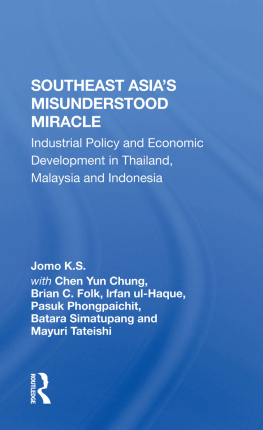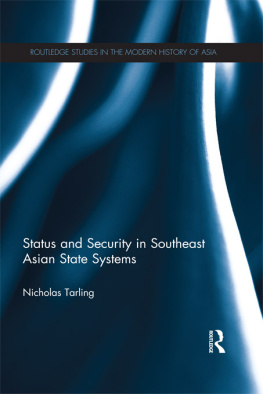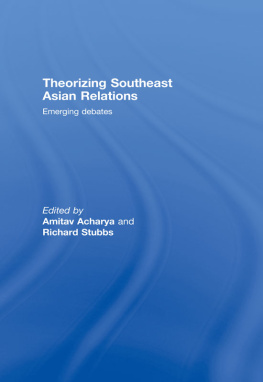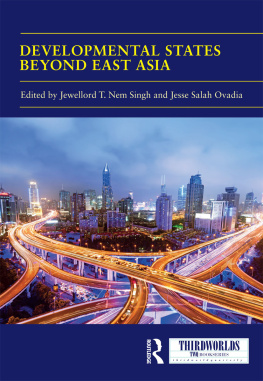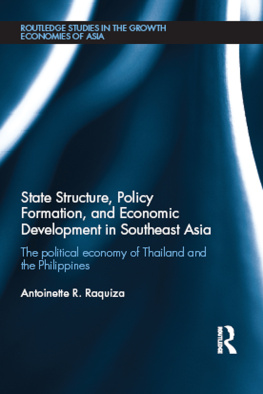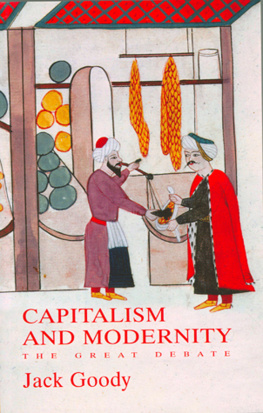First published 1997 by Westview Press, Inc.
Published 2019 by Routledge
52 Vanderbilt Avenue, New York, NY 10017
2 Park Square, Milton Park, Abingdon, Oxon OX14 4RN
Routledge is an imprint of the Taylor & Francis Group, an informa business
Copyright 1997 Taylor & Francis
All rights reserved. No part of this book may be reprinted or reproduced or utilised in any form or by any electronic, mechanical, or other means, now known or hereafter invented, including photocopying and recording, or in any information storage or retrieval system, without permission in writing from the publishers.
Notice:
Product or corporate names may be trademarks or registered trademarks, and are used only for identification and explanation without intent to infringe.
Library of Congress Cataloging-in-Publication Data available upon request.
ISBN 13: 978-0-367-28807-5 (hbk)
The debate on the major factors contributing to Southeast Asian industrialization continues unabated. As might be expected, there is much at stake in this debate. The debate is largely ideological in nature and partly centers on the role and contribution of state interventions and other institutions in market processes in the context of late industrialization. At the risk of caricaturing the debate, on the one hand, one finds the dominant and more influential position held by those who blame the state for all that has gone wrong and credit the market for all that has turned out right; on the other hand, the minority statist extreme position basically credits most major economic achievements in East Asia to appropriate interventions by developmentalist states. While very few people would actually fully identify with either of these caricatured extremes, much of the discussion actually gravitates around either of these poles.
Hence, on one side, one finds the economic neo-liberals, the laissez-faire free marketeers who insist that Southeast Asia's spectacular economic growth and industrial transformation in recent decades have been primarily due to free market forces at work. Of course, some modest state intervention, e.g. in the provision of public goods (especially infrastructure and education), as suggested by neoclassical welfare economic theory, is acknowledged and approved of. For example, the World Bank (1993) claims that the Northeast Asian economic miracle has not been due to other kinds of state intervention, especially government promotion of selected strategic industries. While it is no longer denied that industrial policy has been pursued in Northeast Asia, it is also claimed that the results have been mixed at best, and disastrous at worst (at least in the case of Southeast Asia), and that the Northeast Asian economic miracle cannot be attributed to it. It is also claimed that the Northeast Asian success has been largely due to their ability to extricate themselves from distortionary import substitution to allegedly non-distortionary export orientation in their industrialization strategies.
There has been an important and interesting variation of this argument which Wade (1991) has described as the "simulated free market" thesis (Little 1981; Bhagwati 1988). Unlike the "free market" thesis, it, at least, concedes that the South Korean state has been distortionary, but argues that the distortionary effects of import substitution in South Korea were sufficiently negated by the same government's export promotion and subsidization efforts. Needless to say, this is a most peculiar argument, which has been compared (Edwards and Jomo 1993) to suggesting that a person must be comfortableon balanceif one leg is immersed in ice cold water while the other is put into hot boiling water.
On the other hand, there has been a growing literature since the mid-1980s, which has responded to the growing neoclassical and other economic literature on state failure by emphasizing instances of "state success" as well as market failure. Drawing primarily from Gerschenkeron's economic history and the Northeast Asian experiences, but also those of Singapore (e.g. Rodan, 1989) and even Hongkong (e.g. see Castells, Goh, and Kwok, 1990), they have emphasized the critical role of "developmentalist states" in achieving late industrialization. The polemical nature of some of this literature is best captured by Alice Amsden's rejection of the World Bank's neoclassical economic formula prescription of "getting prices right" by advocating "getting prices wrong," meaning "getting prices wrong correctly" in the sense of rejecting comparative static determinations of comparative advantage in favor of a more dynamic understanding of comparative advantage as historically created, rather than as immutably given.
This, of course, highlights the two different senses in which the term "market failure" is used. On the one hand, there is the uncontroversial (to neoclassical economists) sense where market failure is understood in terms of the inability of market forces to achieve an optimum outcome in terms of welfare consequences, usually owing to the externalities involved. Often, however, an alleged "market failure" occurs because even the optimum (defined in terms of static resource allocation) outcome achieved falls well short of what may be socially desirable, e.g. by creating new comparative advantage. Neoclassical economists may be quite right in rejecting those who have broadened the meaning of "market failure" to include such failure of the market to achieve socially desirable objectives. However, this rejectionfrom its own theoretical premisesalso exposes the inability of a framework based on comparative statics to analytically recognize how comparative advantage can be created to increase the gains from economic growth and international trade for a national economy.
To the disappointment of both dogmatic neo-liberals and statists, reality, as usual, is untidily somewhere in between. In rejecting neo-liberal fundamentalism as well as statist exaggeration, this study draws on both critiques of their respective "others" to offer a more nuanced historical analysis of the role of governments, especially industrial policy, in the recent growth and industrialization of the second-tier Southeast Asian NICs.
The research for this book was financed as part of a project on "East Asian Development: Lessons for a New Global Environment" carried out by the United Nations Conference on Trade and Development (UNCTAD) and funded by the Government of Japan. The draft report was presented at UNCTAD in Geneva in October 1995 and a summary version was presented at a conference organized by UNCTAD in Kuala Lumpur on 29 February - 1 March 1996 under the title "Lessons from Growth and Structural Change in the Second-tier Southeast Asian Newly industrializing Countries."
This study is a collective effort which has undergone considerable metamorphosis, The following people contributed material for the draft report submitted to UNCTAD: Chen Yun Chung (). Chen Yun Chung and Foo Ah Hiang competently helped prepare the draft report under tremendous pressure. Hal Hill, Sanjaya Lall, Mari Pangestu, Rajah Rasiah and Michael Rock also provided materials. Ha-Joon Chang provided valuable and prompt critical feedback and other help. Yilmaz Akyuz, Duncan Campbell and Irfan ul-Haque provided valuable comments on the draft manuscript, while Ian Chalmers, Richard Doner, Chris Edwards, Michael Rock, Batara Simatupang and Thee Kian Wie provided very useful comments on some chapters.

